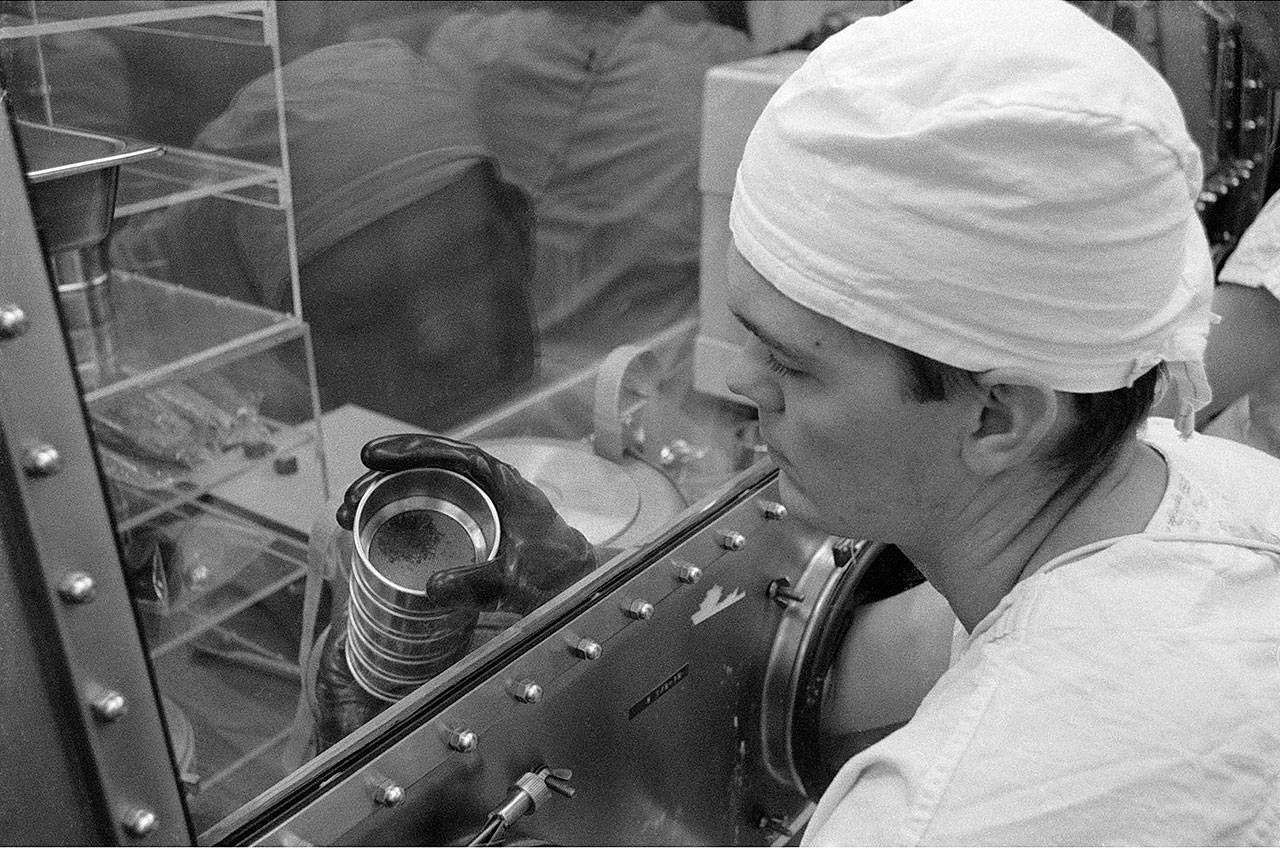For years, Grant Heiken worked in a windowless lab, always wearing what look like cotton pajamas and often spending 14 hours a day peering at rocks through a window in a sealed box.
“It was a dream job,” the Freeland resident said.
From 1969 to 1974, he worked in the Lunar Receiving Laboratory at NASA’s Lyndon B. Johnson Space Center taking samples and making observations of the material brought back from the successful Apollo missions. At the time, he was a young vulcanologist who had recently done his PhD on explosive volcanic activity on the moon, which is how he landed the job in Houston, he said.
Although he lives on Whidbey Island now and is technically retired, Heiken recently returned from giving a lecture as part of the Lunar and Planetary Institute’s Cosmic Exploration Series. He kicked off the series of presentations themed “Apollo to Artemis,” referring to NASA’s planned mission to bring people back to the moon by 2024.
The institute asked Heiken to speak about “lunar dirt, rocks and legacy” in a recounting of the laboratory’s first five years.
As a 27-year-old, he and other young people had been entrusted to work with other worldly materials that had never even come into contact with earth’s atmosphere. The samples were handled in sealed containers filled with nitrogen using thick gloves attached to the container. So much was unknown about the rocks at the time that every precaution was taken.
Upon entry into the lab, the scientists changed into the “pajamas,” a hat and sterilized shoes. If someone had to use the bathroom or leave for any reason, that person had to shower with “soap that wasn’t very pleasant,” change clothes again and leave through an ultraviolet airlock, he said.
“You didn’t drink too much coffee in the morning,” Heiken joked.
If a glove tore while a scientist was handling one of the samples, it was considered a breach, which was extremely serious. Someone had to push a red button, an alarm went off, the doors locked and no one could leave or do anything until given the clear. The person who was exposed was sent to quarters where the crew was quarantined after missions.
After Apollo 14, NASA officials decided there wasn’t a significant threat of a lunar plague and ended post-mission quarantines, according to the space administration’s website.
Although the long days and stringent sterilization requirements could get tiresome, Heiken maintains it was “the best job in the world.” The analyses of Apollo samples completely transformed understanding of the moon and added insight into the earth and sun’s history as well.
For instance, the moon was formed at roughly the same time as the earth, approximately 4.5 billion years ago. The moon’s surface is covered by rock fragments and dust, called lunar regolith, which was formed by meteorite impacts. The rocks and mineral grains are enriched with chemical elements implanted by solar radiation, according to the Smithsonian National Air and Space Museum. Thus, the regolith contains a record of sun radiation that’s more than four billion years old.
Heiken and his colleagues were some of the first people to bear witness to these and many other discoveries, and he said every paper they wrote was successfully published.
Those discoveries were, of course, made possible by the samples collected by astronauts, many of whom Heiken had trained as a geology instructor in the astronaut training program. He took them into desert landscapes similar to what they’d experience on the moon; he said this was more about teaching the astronauts how to be objective observers than how to be geologists.
Years later, he and two others literally wrote the book on the moon, creating an encyclopedic reference on scientific and technical aspects of the space rock. He and fellow space scientist Eric Jones also received funding from NASA to publish transcripts from the Apollo missions along with reflections from the astronauts and scientific insight and context from Heiken.
They created “On the Moon: The Apollo Journals,” and Heiken’s wife Jody Heiken copy edited it.
Grant and Jody Heiken came to Whidbey in 2004 to retire, although he doesn’t exactly spend his days playing golf — the mere mention of doing this made him cringe.
He’s an active board member of the Whidbey Camano Land Trust and, for a few different entities, he’s provided his expertise to creative reference and educational materials about Whidbey Island geology.
Dubbed “The Rock” years ago, Whidbey seems like the perfect place for a lunar geologist.



